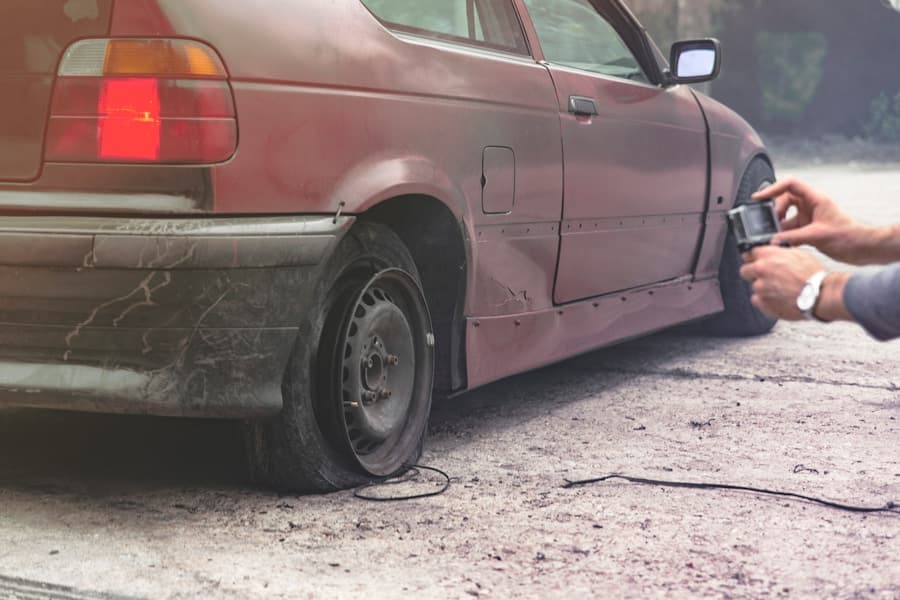When we think about car ownership, we often focus on the initial purchase price, fuel expenses, and insurance premiums. However, one crucial aspect that we must not overlook is budgeting for car repairs and maintenance costs. These expenses can accumulate over time and can significantly impact our overall financial health if not planned for adequately.
By understanding the importance of budgeting for these costs, we can ensure that we are prepared for any unexpected repairs and can maintain our vehicles in optimal condition. Budgeting for car repairs and maintenance is essential because it allows us to avoid financial strain when unexpected issues arise. Cars are complex machines that require regular upkeep to function efficiently.
From oil changes to brake replacements, these services can add up quickly. By setting aside a specific amount each month for these expenses, we create a financial cushion that can absorb the shock of sudden repairs. This proactive approach not only helps us manage our finances better but also ensures that our vehicles remain safe and reliable.
Key Takeaways
- Budgeting for car repairs and maintenance is important for keeping your vehicle in good condition and avoiding unexpected financial strain.
- Assess your current financial situation to determine how much you can realistically set aside for car repairs and maintenance.
- Create a separate savings fund specifically for car repairs and maintenance to ensure you have the necessary funds when needed.
- Research average costs for common car repairs and maintenance to better understand how much to budget for.
- Prioritize and plan for regular maintenance to prevent costly repairs in the future.
Assessing Your Current Financial Situation
Before we can effectively budget for car repairs and maintenance, we need to take a close look at our current financial situation. This involves evaluating our income, expenses, and any existing savings. By understanding where our money is going each month, we can identify areas where we might be able to cut back and allocate those funds toward our car maintenance budget.
It’s essential to be honest with ourselves during this assessment; only then can we create a realistic budget that reflects our true financial capabilities. In addition to examining our monthly cash flow, we should also consider any outstanding debts or financial obligations that may affect our ability to save for car repairs. If we have high-interest loans or credit card debt, it may be wise to prioritize paying those off before committing significant funds to a car maintenance budget.
By taking a comprehensive look at our financial landscape, we can make informed decisions about how much we can realistically set aside for car repairs without compromising our overall financial stability.
Creating a Separate Savings Fund for Car Repairs and Maintenance

Once we have assessed our financial situation, the next step is to create a separate savings fund specifically for car repairs and maintenance. This dedicated fund will help us keep track of our savings and ensure that the money is available when we need it. We can open a high-yield savings account or use an envelope system to physically separate these funds from our everyday spending money.
By doing so, we create a clear boundary that prevents us from dipping into this fund for non-emergency expenses. To build this savings fund effectively, we should determine a monthly contribution amount based on our budget assessment. This amount should be realistic and manageable, allowing us to contribute consistently without feeling financially strained.
We might also consider setting up automatic transfers from our checking account to our savings fund each month. This way, we treat our car maintenance savings like any other bill, ensuring that we prioritize it in our financial planning.
Researching Average Costs for Common Car Repairs and Maintenance
To effectively budget for car repairs and maintenance, it’s crucial that we research the average costs associated with common services. This knowledge will help us set realistic savings goals and prepare for potential expenses down the line. We can start by looking up the average costs of routine maintenance tasks such as oil changes, tire rotations, brake replacements, and fluid flushes.
Many online resources provide valuable insights into these costs based on vehicle make and model, which can help us tailor our budget more accurately. In addition to routine maintenance, we should also familiarize ourselves with the costs of more significant repairs that may arise as our vehicles age. For instance, understanding the average cost of replacing a transmission or engine can help us prepare for these potential expenses in advance.
By compiling a list of common repairs and their associated costs, we can create a more comprehensive budget that accounts for both routine maintenance and unexpected repairs.
Prioritizing and Planning for Regular Maintenance
Regular maintenance is key to prolonging the life of our vehicles and preventing costly repairs down the line. As part of our budgeting process, we should prioritize these routine services based on manufacturer recommendations and our driving habits. For example, if we frequently drive in stop-and-go traffic or harsh weather conditions, we may need to schedule more frequent oil changes or tire rotations than someone who primarily drives on highways.
By planning for regular maintenance in advance, we can avoid the temptation to skip these essential services due to budget constraints. We should create a maintenance schedule that outlines when each service is due and how much it will cost. This proactive approach not only helps us stay on top of necessary repairs but also allows us to allocate funds accordingly in our budget.
Exploring Options for Extended Warranties or Maintenance Plans

As we navigate the world of car ownership, it’s worth considering whether an extended warranty or maintenance plan might be beneficial for us. These options can provide peace of mind by covering certain repair costs that may arise after the manufacturer’s warranty expires. However, it’s essential to carefully evaluate the terms of any warranty or plan before committing to ensure it aligns with our needs and budget.
When exploring extended warranties or maintenance plans, we should compare different providers and their offerings. Some plans may cover only specific components or have high deductibles, while others may offer more comprehensive coverage at a reasonable price. By doing thorough research and asking questions about what is included in each plan, we can make an informed decision that enhances our financial security regarding car repairs.
Seeking Out Discounts and Deals for Car Repairs and Maintenance
In our quest to manage car repair and maintenance costs effectively, seeking out discounts and deals can significantly reduce our expenses. Many auto repair shops offer promotions or loyalty programs that can help us save money on routine services. Additionally, some manufacturers provide discounts on parts or services for specific models or during certain times of the year.
We should also consider joining online forums or local community groups where members share information about reputable mechanics who offer competitive pricing. By tapping into these resources, we can find trustworthy service providers who won’t break the bank when it comes to maintaining our vehicles. Furthermore, being proactive about seeking out deals allows us to stretch our car maintenance budget further while ensuring that our vehicles remain in good working order.
Revisiting and Adjusting Your Budget as Needed
Finally, it’s essential that we regularly revisit and adjust our budget as needed. Life circumstances change, and so do our financial situations; therefore, maintaining flexibility in our budgeting process is crucial. We should set aside time every few months to review our car repair savings fund and assess whether our contributions are still aligned with our needs.
If we find ourselves consistently over- or under-budgeting for car repairs, it may be time to make adjustments based on actual expenses incurred or changes in income. Additionally, if we experience significant repairs or unexpected costs, we should reassess our savings goals to ensure that we are adequately prepared for future expenses. By staying proactive in managing our budget, we can maintain control over our finances while ensuring that our vehicles remain safe and reliable on the road.
In conclusion, budgeting for car repairs and maintenance is an essential aspect of responsible vehicle ownership. By understanding the importance of these costs, assessing our financial situation, creating dedicated savings funds, researching average repair costs, prioritizing regular maintenance, exploring warranty options, seeking discounts, and adjusting our budgets as needed, we can navigate the complexities of car ownership with confidence. Through careful planning and proactive management of our finances, we can ensure that we are prepared for whatever challenges may arise on the road ahead.
If you’re looking to better understand your options for car repair protection, warranty, and insurance, you may want to check out this article. It delves into the intricacies of navigating the various choices available to you when it comes to safeguarding your vehicle. Understanding these options can help you budget more effectively for unexpected car repairs and maintenance costs.
FAQs
What are unexpected car repairs and maintenance costs?
Unexpected car repairs and maintenance costs are expenses that arise unexpectedly and are not part of the regular maintenance schedule for your vehicle. These can include repairs for unexpected breakdowns, worn-out parts, or other issues that may arise with your car.
Why is it important to budget for unexpected car repairs and maintenance costs?
Budgeting for unexpected car repairs and maintenance costs is important because it allows you to be financially prepared for any unforeseen expenses that may arise with your vehicle. By setting aside funds for these costs, you can avoid financial stress and be better equipped to handle any repairs or maintenance that your car may require.
How can I budget for unexpected car repairs and maintenance costs?
You can budget for unexpected car repairs and maintenance costs by setting aside a portion of your monthly income specifically for these expenses. Creating a separate savings account or emergency fund for car repairs can also help you be prepared for any unexpected costs that may arise.
What are some tips for saving money on car repairs and maintenance?
Some tips for saving money on car repairs and maintenance include staying on top of your vehicle’s regular maintenance schedule, learning to perform basic maintenance tasks yourself, comparing prices from different mechanics or repair shops, and considering purchasing a vehicle with a good warranty or maintenance plan.
How can I prioritize car repairs and maintenance within my budget?
Prioritizing car repairs and maintenance within your budget involves assessing the urgency and importance of each repair or maintenance task. You can prioritize by addressing safety-related issues first, followed by essential maintenance tasks, and then addressing non-essential repairs based on your budget and financial situation.






